Kelly Carmichael – 28 March, 2014
As public programmes go, 'New Compositions: Three Composers Respond to Tusalava' was one of the most ambitious and successful examples of how cultural organisations can operate in an expanded field of practice. What resulted here was not only three new art works, but an extension of the exhibition Agiagia's concept and reach that strongly connected with diverse audiences.
Mangere
Music and screening
New Compositions: Three Composers Respond to Tusalava
Curated by James Pinker and Paul Brobbel
15 March 2014 7pm
It seems an odd paradox that an artist such as Len Lye, who worked prolifically across art forms and was ambitiously experimental, has not attracted more interdisciplinary attention. Lye is known as something of a maverick, an incorrigible innovator of form and material. He had a mischievous side and a habit of comparing his kinetic sculptures to rude bits, and their motions to mating. You can understand why when you see his work bend, jiggle, sashay and undulate.
Lye’s kinetic works are captivating - either as elegant metaphors or representations of the primal rhythms and rituals that still define life - while his films are radically creative and often euphorically joyful. As a practicing essayist, painter and poet he never felt the need to bind his talent to a singular form. So why hasn’t Lye’s work attracted more interdisciplinary attention? I can only imagine that the creativity and unpredictability inherent in many cross-disciplinary approaches would have certainly appealed to him.
A small event last week at the Mangere Arts Centre - Ngā Tohu o Uenuku might have just changed all this. New Compositions: Three Composers Respond to Tusalava was an inspired and credible addition to the reinterpreting of Len Lye’s practice. The project asked Pasifika composers Matatumua Opeloge Ah Sam, Poulima Salima and Matthew Faiumu Salapu (aka Anonymouz) to create a soundtrack for Lye’s 1929 short film Tusalava. Tusalava has remained a silent film for many years but originally had music written for two pianos. Played live at the premiere, the original score is now lost.
An end piece to the recent exhibition Agiagia curated by James Pinker and Paul Brobbel, the project echoed the exhibition’s vision of a starting point to understand the Pasifika influences in Lye’s work. The three new scores were debuted and played consecutively alongside the film, followed by discussion between Pinker and the composers. Tusalava changed in the hands of these composers, shifting profoundly from score to score and revealing hidden layers within the well-known content.
First up was Opeloge Ah Sam, who created most the gentle and lyrical of the new scores. His work offered a sensual accompaniment to Lye’s fusion of Maori, Aboriginal, Polynesian and modernist forms which evolve, consume and regenerate new life. Woven together by the traditional Samoan sound of a beaten fala, his composition offered three distinct sections corresponding to visual shifts in the film. In the final stage Opeloge Ah Sam offered a vocal - the only composer to do so - the word ‘matagofie’ or beautiful.
Followed by the contribution of Poulima Salima, the contrast couldn’t have been greater. Salima gave us a clanging, stark, mechanical-feeling soundscape that became more and more thrilling as the film progressed. In his hands Tusalava‘s grub-like forms were recast as much darker entities, cogs in a menacing tale of invasion and viral destruction. Those qualities of motion that Lye wanted to compose and translate into visual forms were heightened by Salima’s score, which added a new texture to the celebrated classic.
The approach taken by the final composer Matthew Faiumu Salapu was both experimental and beautiful in a way that most clearly imitated Lye’s own approach to creating art. His composition allowed each passage of the film to read emotionally, bringing clarity and a sense of scale to the Tusalava that I’d never seen before. Salapu’s score made the 10 minute short film feel like an epic. A mini epic perhaps, but no less of a journey. Involving the drone of a didgeridoo as well as Maori and Samoan instruments, western strings for suspense and unexpected sounds or tempo shifts, Salapu’s slick composition offered a methodology that echoed Lye’s own. He incorporated scratching into the audio, subtracting from the source, and creating held or sweeping notes as a tribute to Lye’s love to movement.
Asking young, locally based composers unfamiliar with Len Lye’s work to respond to Tusalava allowed a new take on the celebrated film. Most obviously it offered the opportunity to come at it from musical, not visual arts, perspective - an understanding and perspective unlike so many of the responses Lye’s work generates from artists or curators. His practice has many links to music and Roger Horrocks has written of how Lye saw music and images as related arts of movement.
The way in which music can provoke a bodily response from its audience is echoed by Lye’s desire for his own practice. Being around Lye’s work is a full sensory experience. The patterns of motion traced by his hypnotic kinetic works combine with the soundscape they generate - ranging from a gentle hula shake to an unsettlingly loud clang - not only echoing the rhythms of our lives but asking that our bodies respond in kind.
As public programmes go, New Compositions: Three Composers Respond to Tusalava was one of the most ambitious and successful examples of how cultural organisations can operate in an expanded field of practice. What resulted here was not only three new art works, but an extension of the exhibition’s concept and reach that strongly connected with diverse audiences. Alongside the usual art-crowd also present were many local residents. Some “just came along because it was free, but man we’re so happy we did!”, others knew the composers by reputation or from local community groups. It’s a great example of the curator’s job not stopping once the work is on the wall or in the building, but continuing to craft an experience and entry into the work, one that ventures beyond the usual offer of talks, films and children’s workshops.
Kelly Carmichael
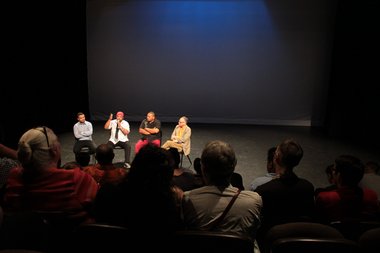
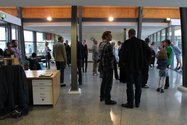
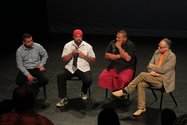
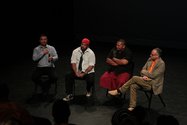

 Two Rooms presents a program of residencies and projects
Two Rooms presents a program of residencies and projects Advertising in this column
Advertising in this column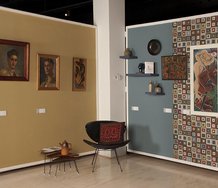

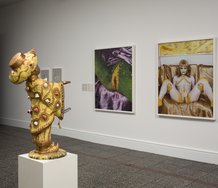
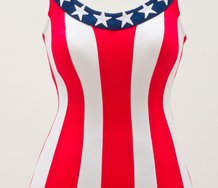
This Discussion has 0 comments.
Comment
Participate
Register to Participate.
Sign in
Sign in to an existing account.